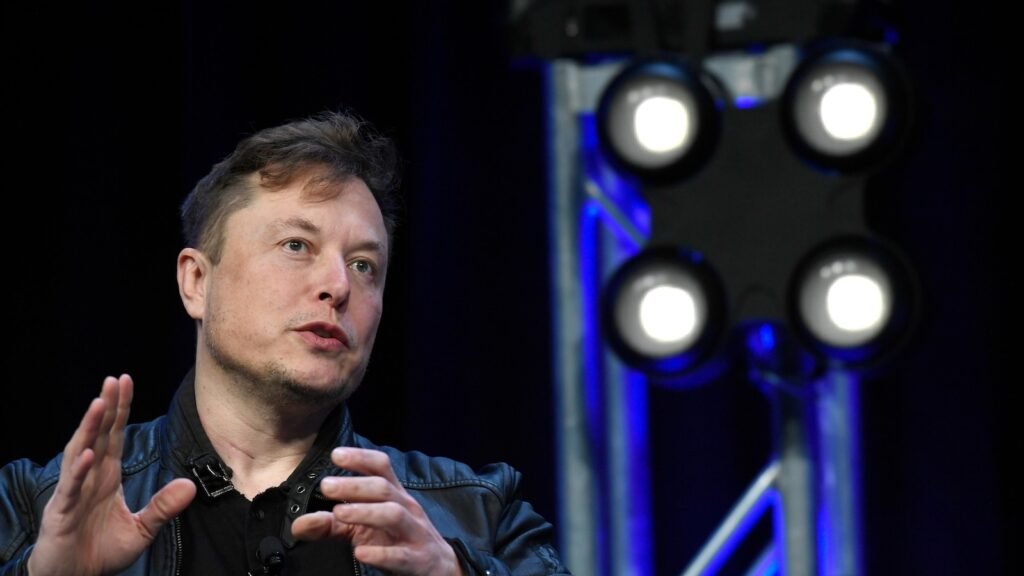New York – Elon Musk promised in 2019 that the driverless Tesla “Robotaxis” would go on “next year”, but that didn’t happen. A year later, he promised to deliver them in the second year, but that didn’t happen.
Despite the empty promise, the promise continues. “Next year, we will have more than one million robots,” Musk said last January.
Will you settle in 10 or 12?
Musk appears to be on Sunday, and his robot vision becomes a reality during a test of a small group of autonomous cabs in Austin, Texas. But reaching a million dollars could take a year or more, although billionaires should be able to expand services this year if the Austin demo is successful.
The bet cannot be higher, nor is it a challenge.
While Musk made his “next year” commitment, rival Waymo was busy deploying driverless taxis in Los Angeles, San Diego, Austin and other cities by using other technologies to make it go to the market faster. It just completed its 10 millionth payment.
Boycotts related to Musk’s politics have made Tesla’s sales very large. Competitor electric car manufacturers with new competitive models have stolen market share. Investors are at the edge when Musk is fighting the US president overseeing federal auto regulators on social media, which could make Robotaxi launch even more difficult. Musk said he regretted some of his comments, and the stock recovered to a certain extent.
Tesla shareholders have been with Musk for years as he made a lot of money in the process by establishing a successful independent electric vehicle company (the self-driving car commitment). Ten years ago, Tesla’s stock price was about $18. The stock closed at $322 on Friday.
Musk said Austin’s test will start modest enough that only 10 or 12 vehicles pick up passengers in limited areas. But then it will quickly upgrade and spread to other cities, eventually reaching hundreds of thousands or even a million cars next year.
Some musk watchmen on Wall Street are skeptical.
“Can he expand his fleet quickly?” asked CFRA analyst Garrett Nelson. “We might have said twelve cars at first. It’s small.”
Seth Goldstein of Morningstar said Musk is the classic Musk: too much promise, too fast.
“It will be successful when anyone in Austin can download the app and use the bot, but I don’t think it will happen until 2028,” he said. “The test will take a while.”
Among investors, Musk tends to increase the trend of stocks with a little exaggeration.
In 2018, he told Tesla shareholders that he had “funded funds” to buy all the shares at a huge premium and privatize the company. But, according to the federal stock regulator who fined him, he not only lacked written commitments from financiers, but also hadn’t discussed the loan amount or other details with them.
Recently, Musk told CNBC in May that Tesla is experiencing a “significant rebound.” A week later, a European auto trading group announced sales fell by half.
Musk has come under fire for allegedly exaggerating the system’s capabilities, starting with the name. Completely autonomous driving is a wrong name. The system still requires drivers to turn their eyes to the road as they may need to intervene and be controlled at any time.
After several accidents, federal highway safety regulators investigated FSD last year and the Justice Department conducted its own investigation, although the situation is not yet clear. Tesla also faces lawsuits over the feature, some leading to settlements and others being dismissed. In one case, the judge ruled against the plaintiffs, but it was simply because they did not “intentionally” prove that Musk made a false statement.
Musk said the robot will run on an improved full self-driving version and the cab will be safe.
He also said the service will be able to expand rapidly across the country. His Secret Weapon: Millions of Tesla owners on the road. He said software updates from outside Taiwan will soon enable them to turn cars into driverless taxis and start side jobs while staying in the office for eight hours or a week off.
“Your car doesn’t bring you in the parking lot, you can make money,” Musk said earlier this year. “You will be able to add cars or add them from a fleet.”
Musk said Tesla could also deploy taxis quickly because unlike Waymo, he decided to rely solely on cameras to navigate, which is a more expensive route by supplementing its cameras with lasers and radar.
Musk mused on a conference call with investors, “Tesla will have,” 99% of the market share or something ridiculous. “Given the potential competition between Waymo’s forward and Amazon and others, it dominates the driverless market to this extent.
But Wedbush Securities analyst and Big Musk fan Dan Ives said that Musk may actually roll it out as Tesla’s capabilities quickly expands. Even skeptics like Morningstar’s Goldstein admit that Musk does make things right occasionally, and it’s excellent.
He upended the automotive industry by getting people to buy expensive electric cars, bringing his Starlink satellite internet service to rural areas, and recently, he has performed a weird trick to list the driverless SpaceX rocket on a platform on Earth.
“Maybe his timeline isn’t realistic, but he can develop futuristic technology products,” Goldstein said.
